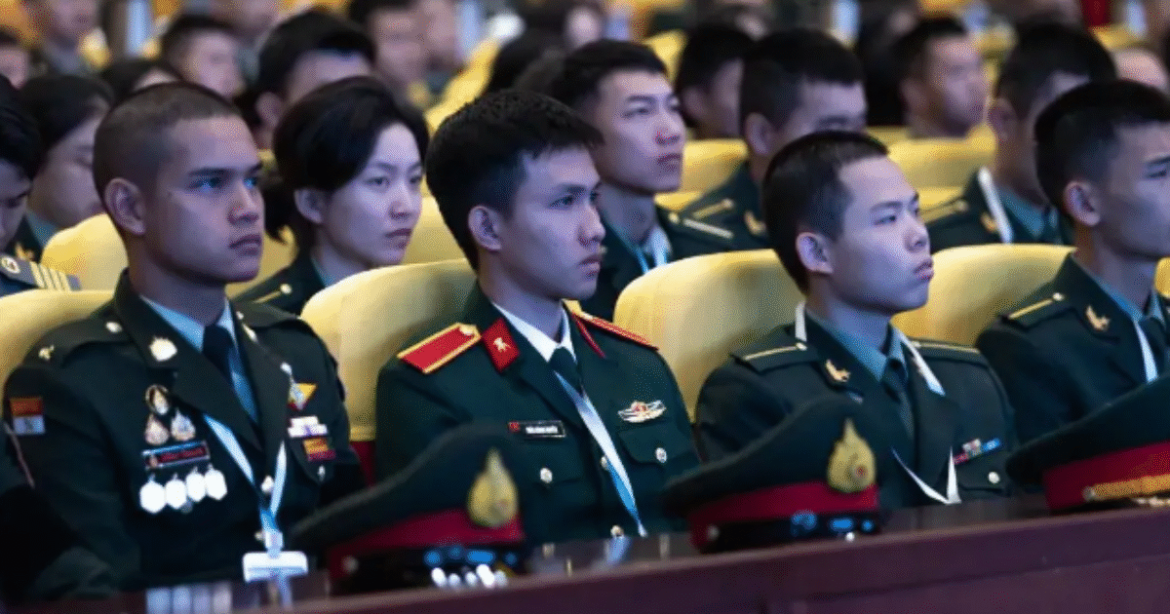

China’s military is undergoing a major doctrinal transformation, moving away from rigid centralized control toward a more flexible, Western-style “mission command” approach. This shift aims to empower lower-level commanders with greater autonomy, making the People’s Liberation Army (PLA) more adaptable and resilient in modern warfare. Analysts warn that such reforms could erode America’s long-standing command-and-control advantage in a potential conflict with China.
According to a report on China Military Online, a People’s Liberation Army (PLA) media, the PLA Rocket Force (PLARF) recently conducted a nighttime confrontation exercise deep in the mountains. Unlike previous drills involving full battalions, this one pitted individual launch units against each other. The directing staff avoided interference, issuing only situational adjustments without preset goals.
In the dark, launch Unit One began aggressively, using drones for reconnaissance and electronic warfare to disable Launch Unit Two’s communications. Caught off guard, Unit Two struggled to respond, losing contact between its command post and launch platform.
But just as Unit One celebrated, it was informed that several of its positions had been “eliminated.” While handling the interference, Unit Two’s commander had quietly sent a team of veteran noncommissioned officers to launch a counter-interference operation, turning the tables.
Unit One’s commander then activated backup communications, redeployed forces, and used deception tactics to regain the initiative. Both sides fought through the night in high-intensity engagements. When the first round ended, Unit Two paused to rest, only to face a surprise attack during the break. Unprepared, it quickly lost half its positions, failing the mission.
Afterward, both units reviewed the exercise and identified key differences from past drills: faster tempo, adaptive tactics, and use of downtime. Attackers now struck critical nodes early instead of advancing slowly. Defenders counterattacked instead of waiting passively. Launch Unit One’s surprise strike during rest periods emphasized that there are no pauses in modern warfare.
The PLARF nighttime exercise reflects a broader doctrinal shift in the Chinese military. A RAND Corporation report noted that Chinese strategists are increasingly promoting “mission command,” a decentralized model common in Western forces that grants lower-level commanders greater freedom to respond to battlefield conditions.
Historically, the PLA’s rigid hierarchy has limited flexibility and slowed decision-making, allowing U.S. forces to exploit those weaknesses. RAND analysts warn that if China fully adopts mission command, the PLA could become far more adaptable and capable of maintaining operations even under disrupted communications.
Some PLA units are already testing this approach. A PLA Daily article urged a move from centralized control to mission command, saying it “leverages the initiative of frontline commanders in a battlefield full of uncertainty and chaos.” It called for optimizing the current system to build one suited for modern, information-based warfare.
The recent Rocket Force exercise demonstrated this evolution, with no preset objectives or controller intervention, unprecedented for the PLA. Individual launch units operated independently, and commanders made rapid decisions, such as Launch Unit Two’s counter-interference raid, showing tactical initiative without waiting for higher approval.
Throughout 2025, the PLA has emphasized “realistic combat training” as a top priority. Xi Jinping has repeatedly instructed the Central Military Commission to strengthen combat readiness and improve training standards. The PLA Navy, for example, increased daily operations around Taiwan earlier in the training cycle than in previous years.
At the same time, the PLA is integrating artificial intelligence and autonomous systems into exercises. New programs like the “War Skull” wargaming platform and “Aiwu LLM+” system generate realistic battle simulations while cutting time and manpower.
Together, these developments mark a major shift in how the PLA prepares for war, training its forces for more autonomous, initiative-driven operations that are harder for adversaries to predict or counter.
These tactical innovations show the PLA’s experimental adoption of Western mission command principles. This evolution makes the PLA a more dangerous adversary, as mission command builds resilience against U.S. strategies that traditionally target centralized command-and-control systems.
The Rand report outlines three possible paths: full adoption of mission command, a hybrid model granting limited freedom to select units, or retention of centralized control with occasional “skip-echelon” orders. Although full decentralization remains unlikely due to political constraints and the Communist Party’s insistence on control, even partial adoption could complicate U.S. strategy. A more flexible PLA would erode America’s long-standing advantage in agility and force Washington to rethink its approach to countering China in future conflicts.
The post China Military Shifting Toward More Flexible, Decentralized “Mission Command” Structure appeared first on The Gateway Pundit.

